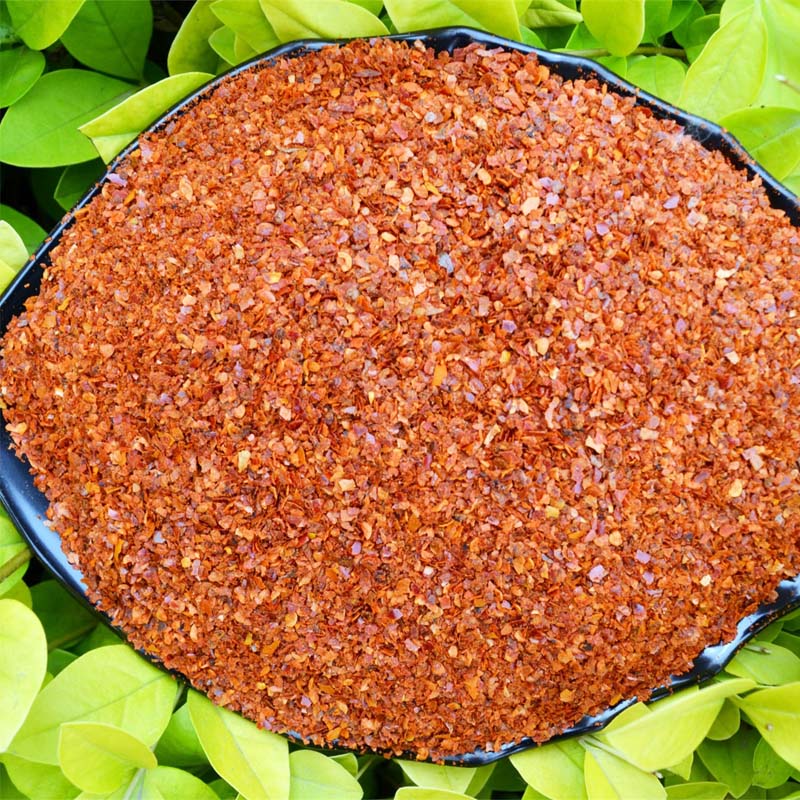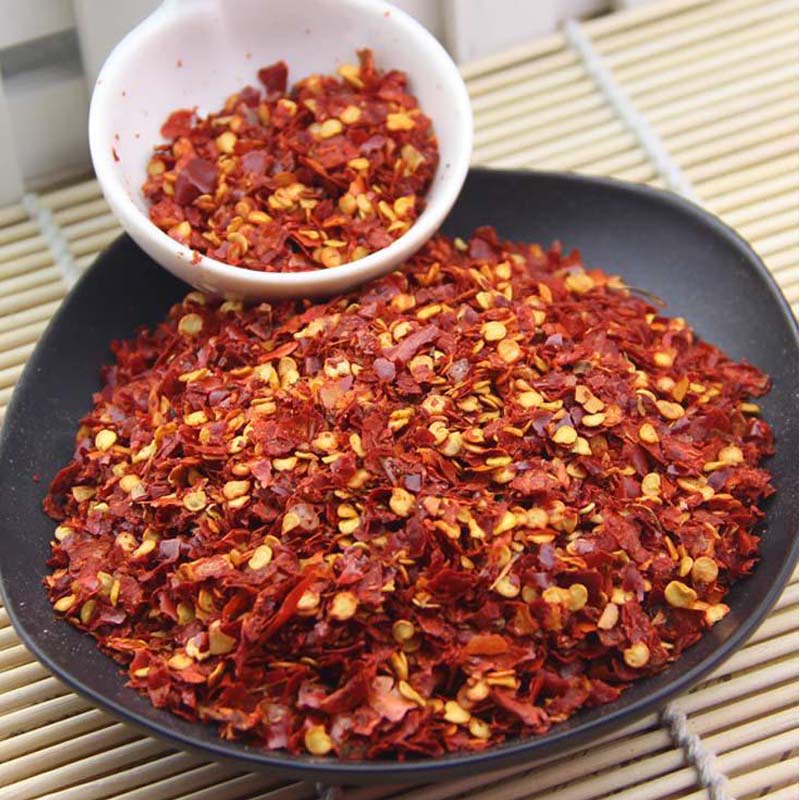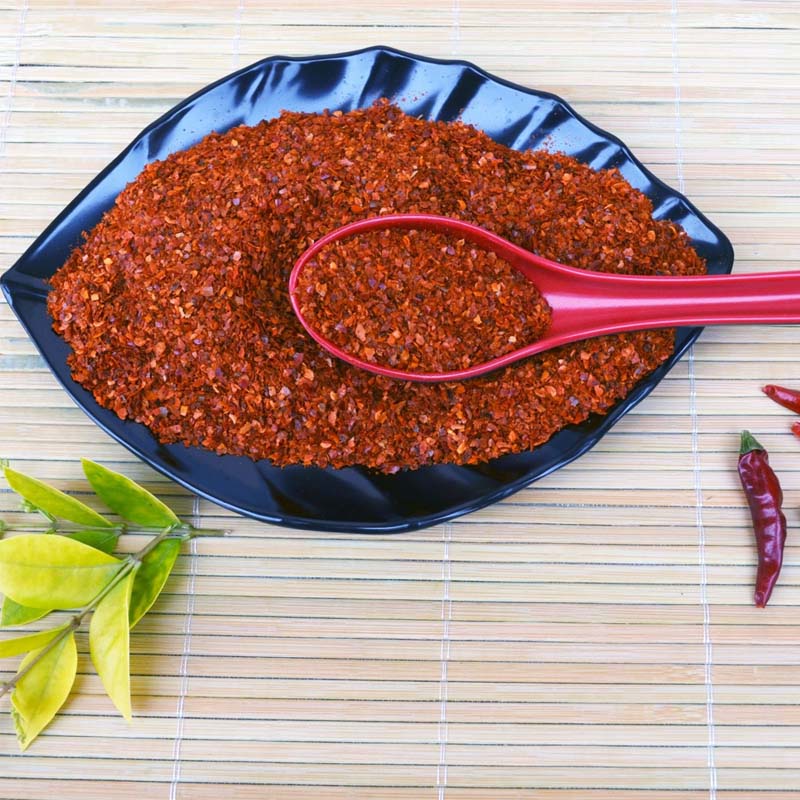- No. 268 Xianghe Street, Economic Development Zone of Xingtai city, Hebei 054001 China
- Byron@hbhongri.cn
Crushed Red Hot Peppers – Bold Heat, All-Natural Flakes
Chili Crushed: an Insider’s Take on crushed red hot peppers
I’ve toured drying sheds from Xinjiang to Hebei and, to be honest, the best batches of crushed red hot peppers always start with disciplined farming and end with meticulous screening. “Chili crushed” (a.k.a. red pepper flakes) is simple on paper—just dried, crushed Capsicum—but the real story is heat consistency, food safety, and visual appeal. Hongri’s origin at No. 268 Xianghe Street, Economic Development Zone of Xingtai city, Hebei 054001 China, has become something of a quiet hub for reliable flakes that pizza shops and snack makers swear by.

Industry trends (and what buyers actually ask for)
Heat is trending up. Brands want bolder, but clean-label. In fact, “no irradiation,” steam-sterilized options are requested more than ever, alongside tighter micro specs and traceable farms. On the operations side, foodservice chains want standard SHU ranges so customer experience stays predictable from store to store. Surprisingly, color ASTA has re-emerged as a proxy for freshness on spec sheets.
Technical specs at a glance
| Parameter | Typical Spec | Method/Standard |
|---|---|---|
| Heat (SHU) | ≈5,000–50,000 (customizable) | HPLC, ASTA 21.3 |
| Moisture | ≤10% | AOAC 925.10 |
| Mesh/flake size | 4–10 mesh options | Sieve analysis |
| Color (ASTA) | ≈60–100 | ASTA 20.1 |
| Salmonella | Absent/25 g | ISO 6579-1 |
| Aflatoxin (total) | ≤10 ppb (real-world may vary by market) | HPLC, EU 1881/2006 |
Process flow (how flakes are really made)
Materials: Mature Capsicum annuum/frutescens; stems, calyx removed. Method: sun or hot-air drying to ≤10% moisture → destoning → seed ratio adjust → crushing (low-shear) → sieving for flake uniformity → optical sort → metal detection (2.0 mm Fe typical) → steam sterilization (optional) → packing (25 kg poly-lined bags or 1 kg foodservice).
Testing: SHU by HPLC; color ASTA; micro per ISO; pesticide MRLs as customer markets require. Service life: 18–24 months in cool, dry, dark conditions. Industries: QSR/pizza, snack coatings, RTE meal kits, infused oils, pickling, deli, and condiment sachets.

Applications and advantages
- Foodservice shakers: consistent pour and visual red flake/seed contrast.
- Snack dusting: adhesion with light oil mist, stable color after baking.
- Sauce builds: quick heat pop without muddying viscosity.
- Infused oils: controlled capsaicinoid release; nice table theatrics.
Advantages: standardized heat, clean label, low cost-per-dose, and, honestly, it just looks appetizing on a margherita slice. Many customers say the aroma “reads fresh” when ASTA stays above ~70.

Vendor comparison (quick buyer’s cheat sheet)
| Vendor | Traceability | Certificates | Heat Range | Lead Time |
|---|---|---|---|---|
| Hongri Spice (Hebei) | Field-to-lot mapping | HACCP, ISO 22000 (on request) | ≈5k–50k SHU | Around 2–4 weeks |
| Generic Trader A | Mixed lot aggregation | Basic HACCP | ≈10k–30k SHU | 4–6 weeks |
| Local Co‑packer B | Limited farm data | Site-specific | Custom on request | 1–3 weeks |
Customization menu
- Heat bands: 5k, 12k, 25k, 40–50k SHU.
- Flake profiles: extra-seed for visual, low-seed for milder bite, 4–10 mesh.
- Treatments: steam-sterilized, light toasting for nutty notes.
- Packs: 25 kg poly-lined bags; 1 kg–5 kg foodservice; single-serve sachets.

Field notes and real-world results
Case 1: A regional pizza chain moved to crushed red hot peppers standardized at 12k–15k SHU and saw complaint tickets on “too hot/too mild” drop by 32% over eight weeks. Staff liked the pour—less clumping in humid kitchens.
Case 2: A chili oil startup spec’d 60–80 ASTA color and low-seed flakes. After switching to steam-treated lots, shelf micro held comfortably within limits through nine months. As one founder told me, “it finally tastes the same every batch.”
Compliance, test data, shelf life
Lots are typically verified to Codex for dried spices, ASTA cleanliness, and ISO micro methods. Many buyers layer on pesticide MRL checks based on destination market. Shelf life runs 18–24 months; rotate stock and keep it cool, dry, and out of sunlight—basic but powerful.
Authoritative sources:
- Codex Alimentarius: Standard for Dried or Dehydrated Spices and Herbs (CXS 326-2017). https://www.fao.org/fao-who-codex
- ASTA Analytical Methods & Cleanliness Specifications. https://www.astaspice.org
- ISO 22000: Food Safety Management Systems. https://www.iso.org/iso-22000-food-safety-management.html
- ISO 6579-1: Microbiology of the food chain — Detection of Salmonella spp. https://www.iso.org
- EU Regulation 1881/2006: Maximum levels for certain contaminants in foodstuffs. https://eur-lex.europa.eu
-
Capsicum frutescens oleoresin – High Purity, Food GradeNewsNov.17,2025
-
Capsicum Frutescens Oleoresin – Natural Heat & FlavorNewsNov.17,2025
-
Peppereka Powder – Fresh, Vibrant Color & Sweet AromaNewsNov.17,2025
-
Paprika Oleoresin | Natural Red Color, Heat & Flavor BoostNewsNov.17,2025
-
Pure Turmeric Extract 95% Curcumin | Potent, Lab-TestedNewsNov.17,2025
-
Red Papper Pods – Premium Sun-Dried, Bold Heat & AromaNewsNov.10,2025







